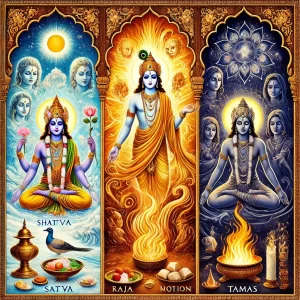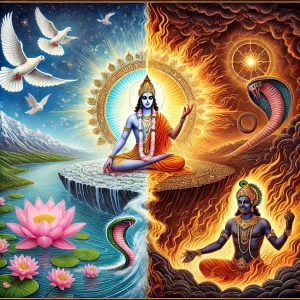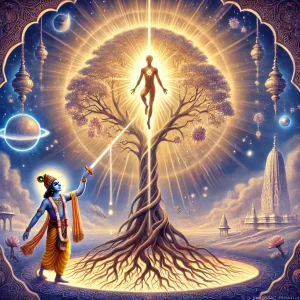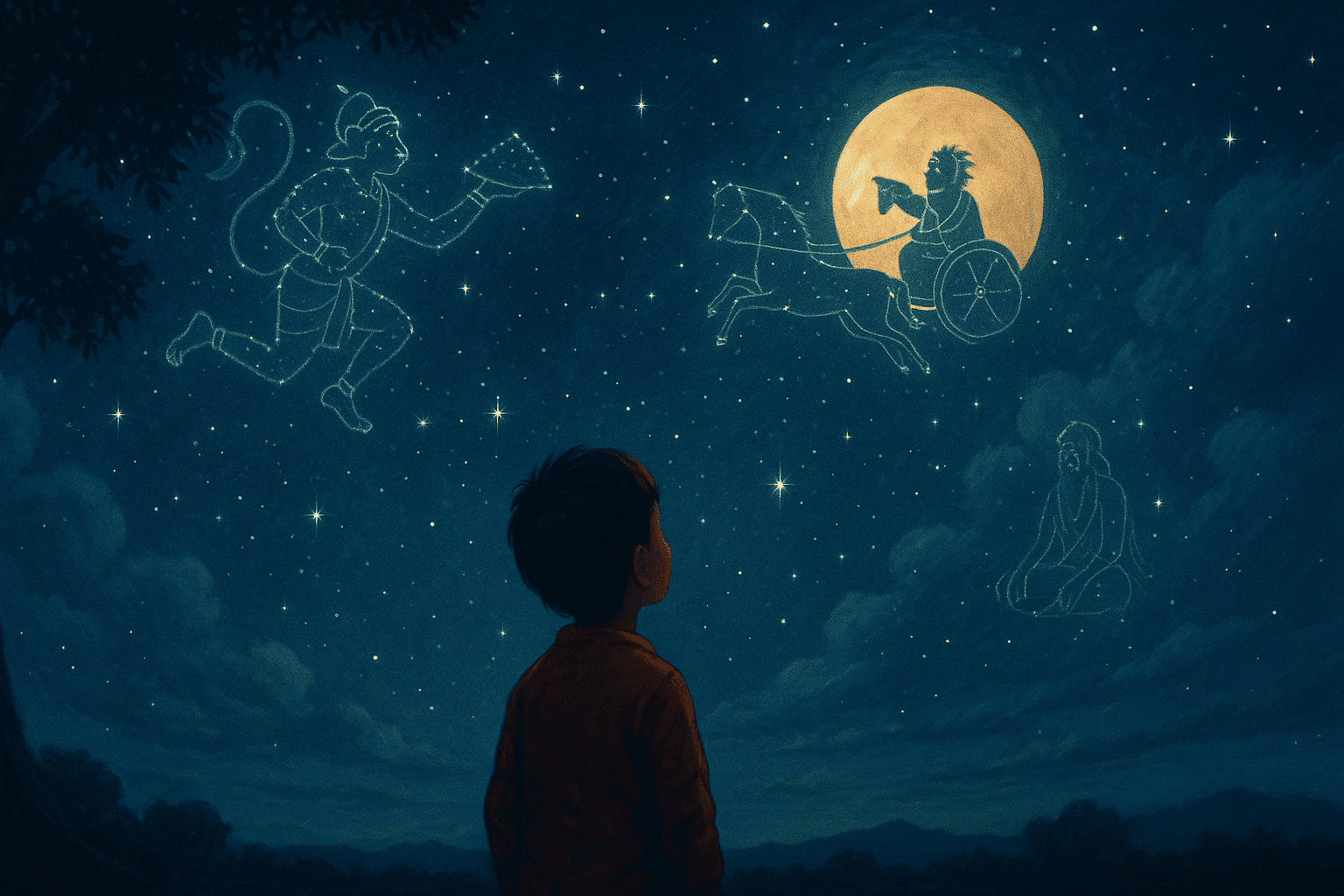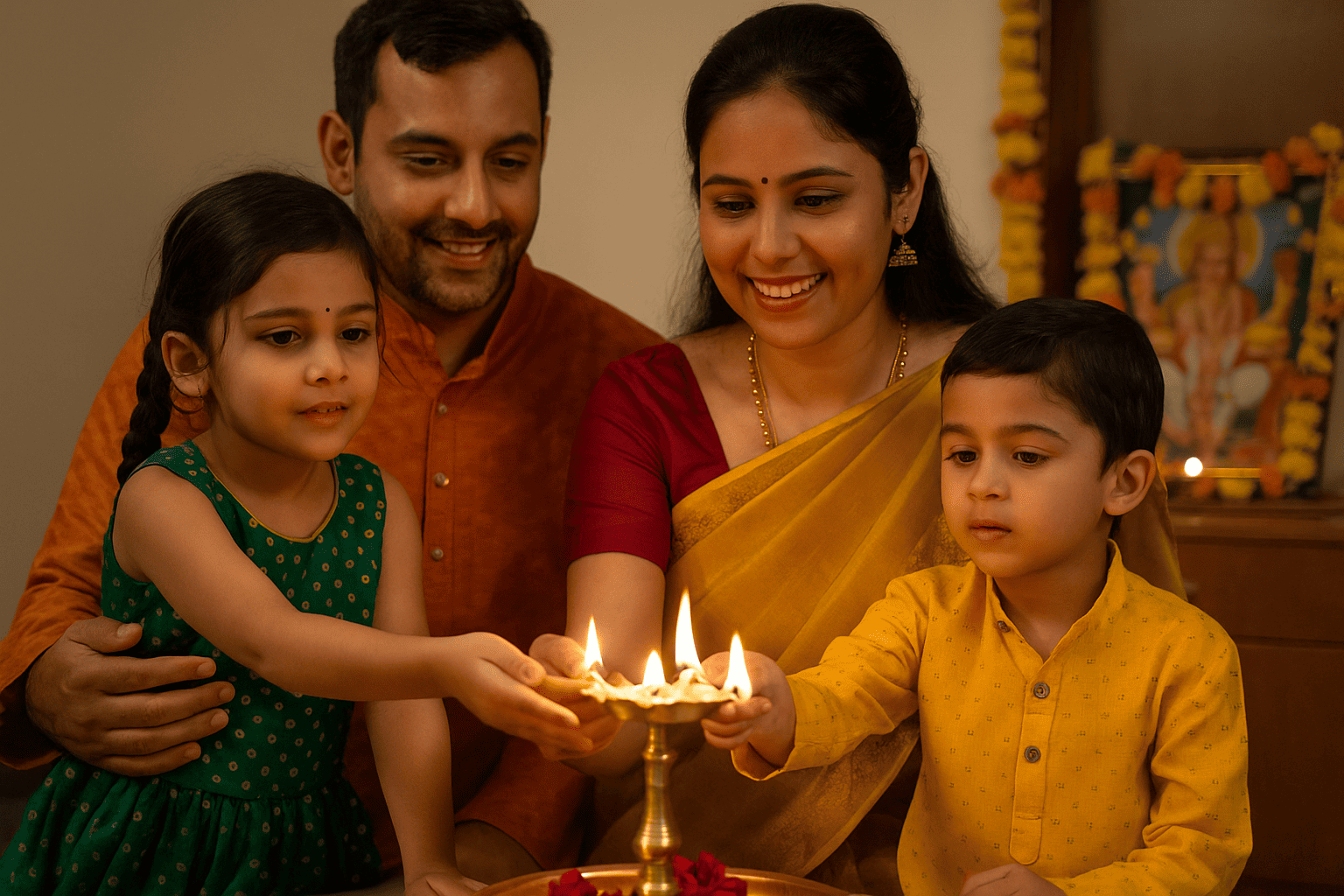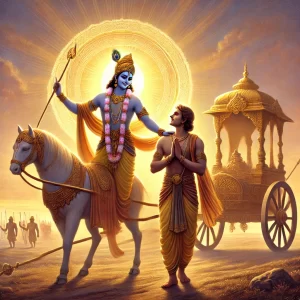
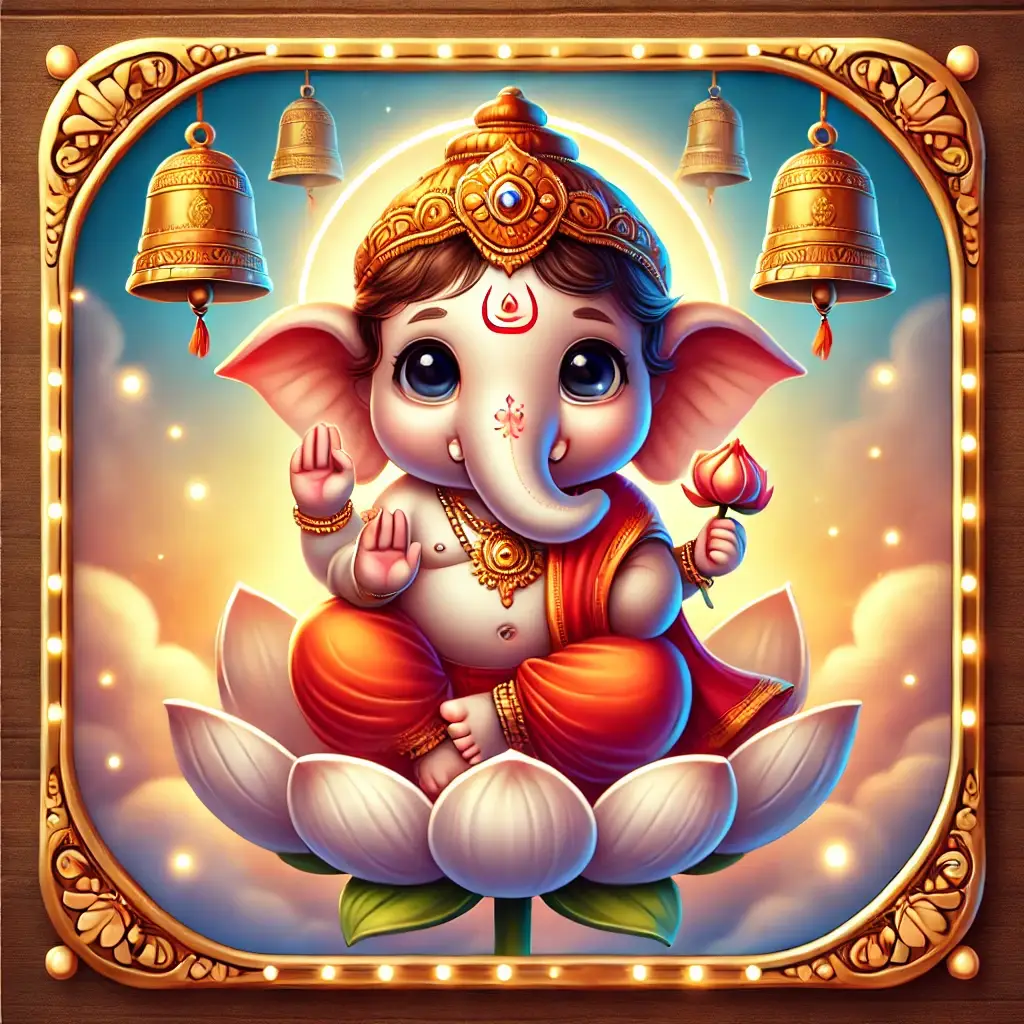
Long ago, in the celestial realms of Mount Kailash, Goddess Parvati, the divine consort of Lord Shiva, was preparing for her bath. Wanting privacy, she wished for someone trustworthy to stand guard outside. So, from the turmeric paste she used for her own body, Parvati sculpted a small boy. She gently breathed life into him, and thus was born Ganesha, radiant and strong.
She instructed him not to let anyone in while she bathed. The child, loyal and obedient, took his duty seriously.
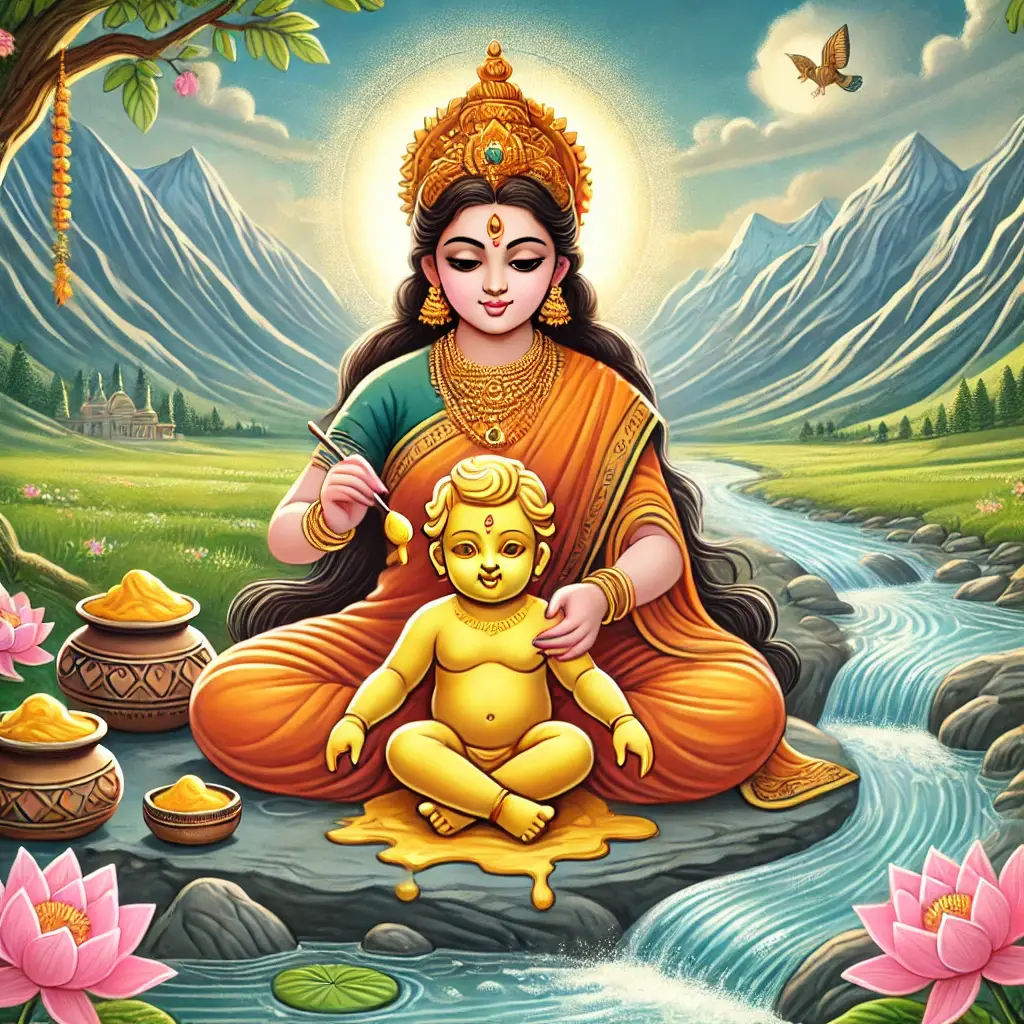
The Conflict with Lord Shiva
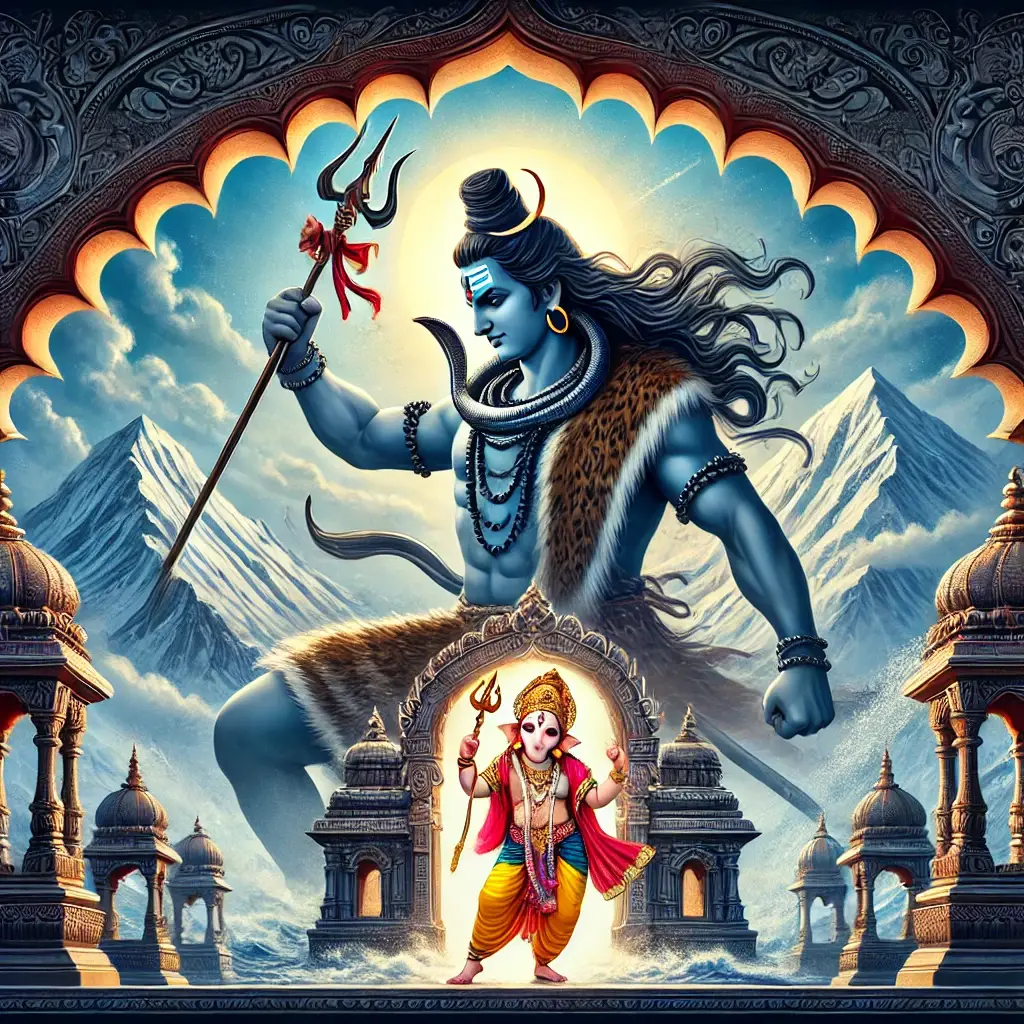
Soon, Lord Shiva returned to his abode and was surprised to find this unknown boy stopping him. Despite Shiva’s repeated requests and identity, Ganesha stood firm, guarding his mother’s orders. A fierce battle broke out. The devas, including Brahma and Indra, tried to intervene, but Ganesha, empowered by Parvati’s shakti, defeated them all.
In anger and confusion, Shiva beheaded the boy with his trishul, and silence fell over Kailash.
When Parvati emerged and saw her son lifeless, she was devastated. Her sorrow turned into fury, and she vowed to destroy the universe. The cosmos trembled.
The Elephant Head
To calm her wrath, Lord Shiva promised to bring the boy back to life. He sent his ganas to find the first living being facing north. They found a baby elephant, and brought back its head. Shiva placed it on the boy’s body and revived him. Parvati embraced her child, relieved and joyful.
Shiva declared him as his own son, and all the gods showered blessings upon him. Thus, Ganesha became known as Gajanana – the elephant-headed one.
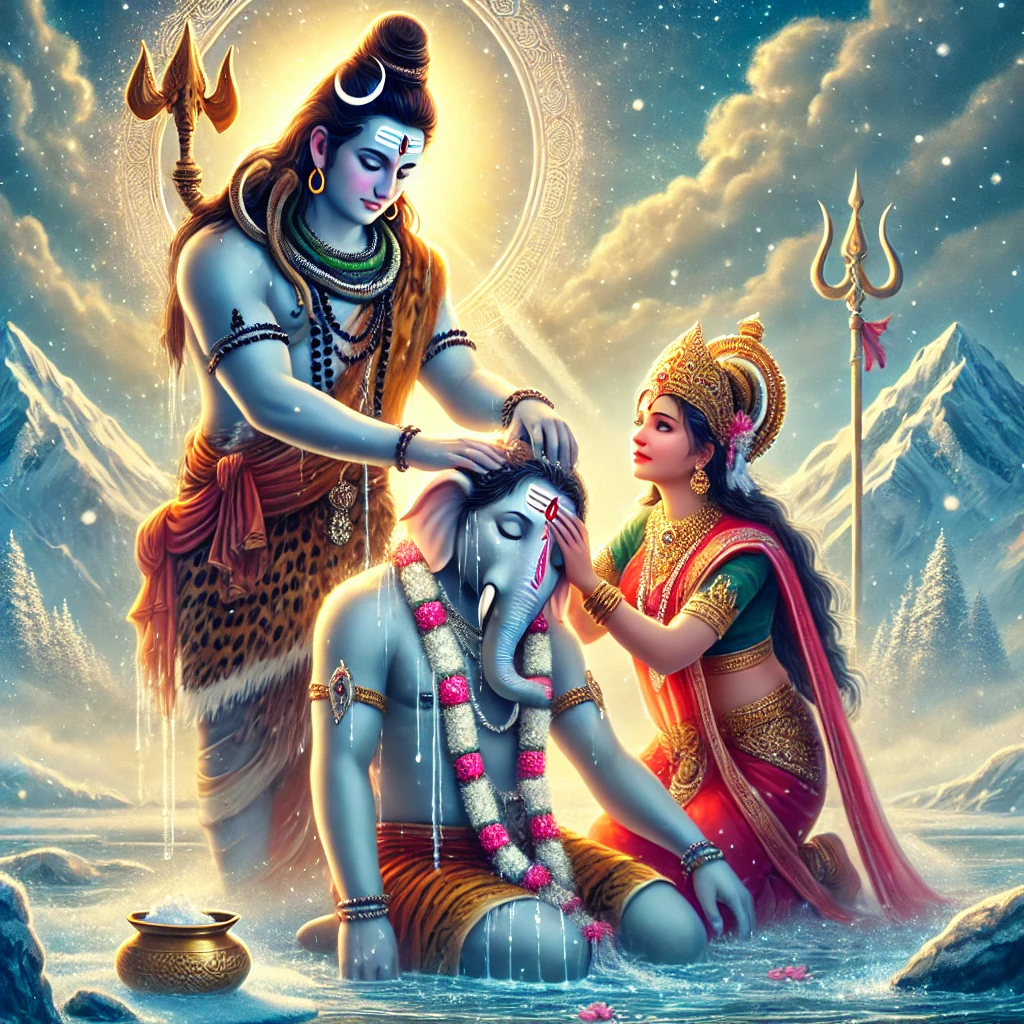
Boons and Symbolism
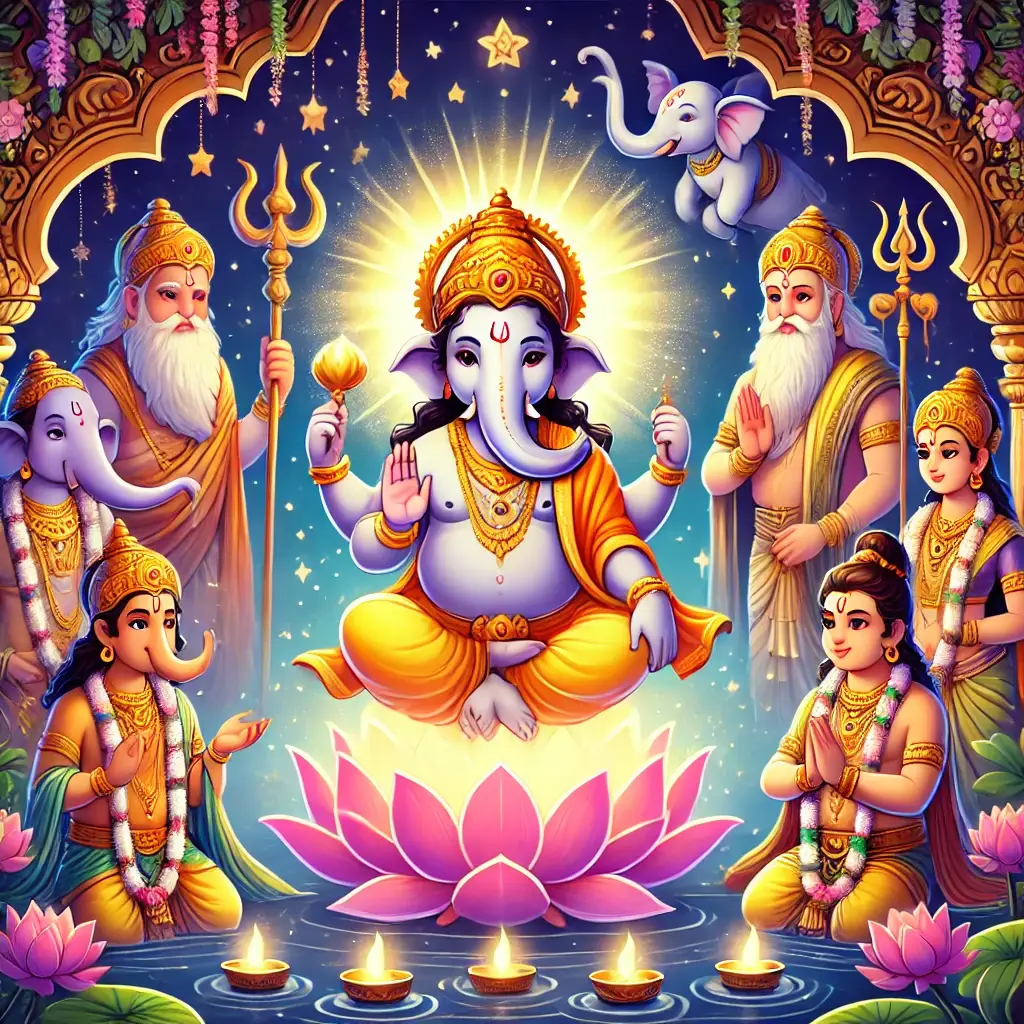
The gods granted Ganesha many boons. Brahma blessed him with immense wisdom. Vishnu gave him the role of obstacle-remover. Shiva made him the leader of his troops — hence the name Ganapati or Ganesha, “Lord of the Ganas.”
Ganesha became known as the Vighnaharta (remover of obstacles) and Siddhivinayaka (giver of success). His large ears symbolize a good listener, his broken tusk represents sacrifice, and his mouse companion shows humility and the ability to control desire.
The Wisdom Challenge
One day, Sage Narada brought a divine fruit to Kailash — a fruit of knowledge and immortality. Shiva and Parvati decided to give it to one of their sons, Ganesha or Kartikeya, through a challenge: whoever circled the world three times first would win it.
Kartikeya flew off on his peacock, determined to circle the world. Ganesha, with wisdom, circled his parents thrice and said, “You are my world.” Touched by his devotion, Shiva and Parvati gave him the fruit.
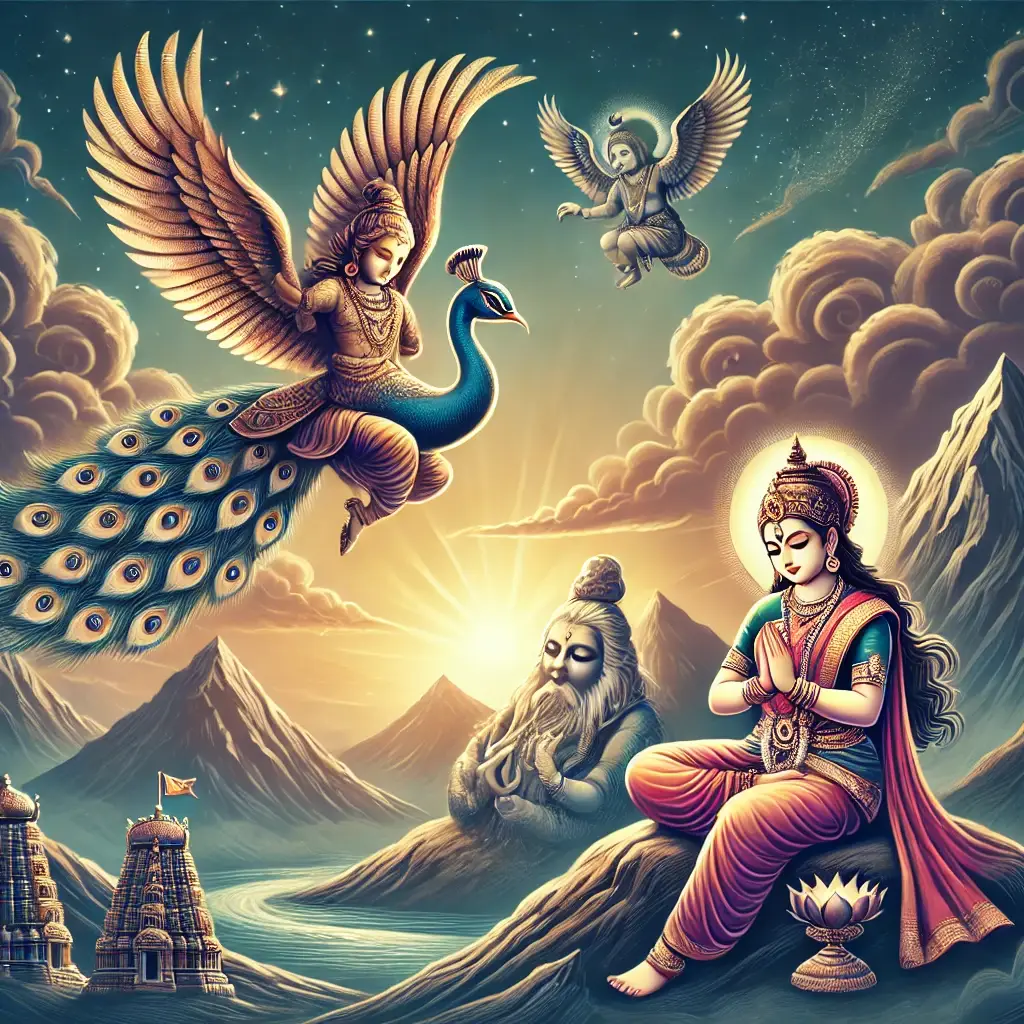
Everlasting Devotion
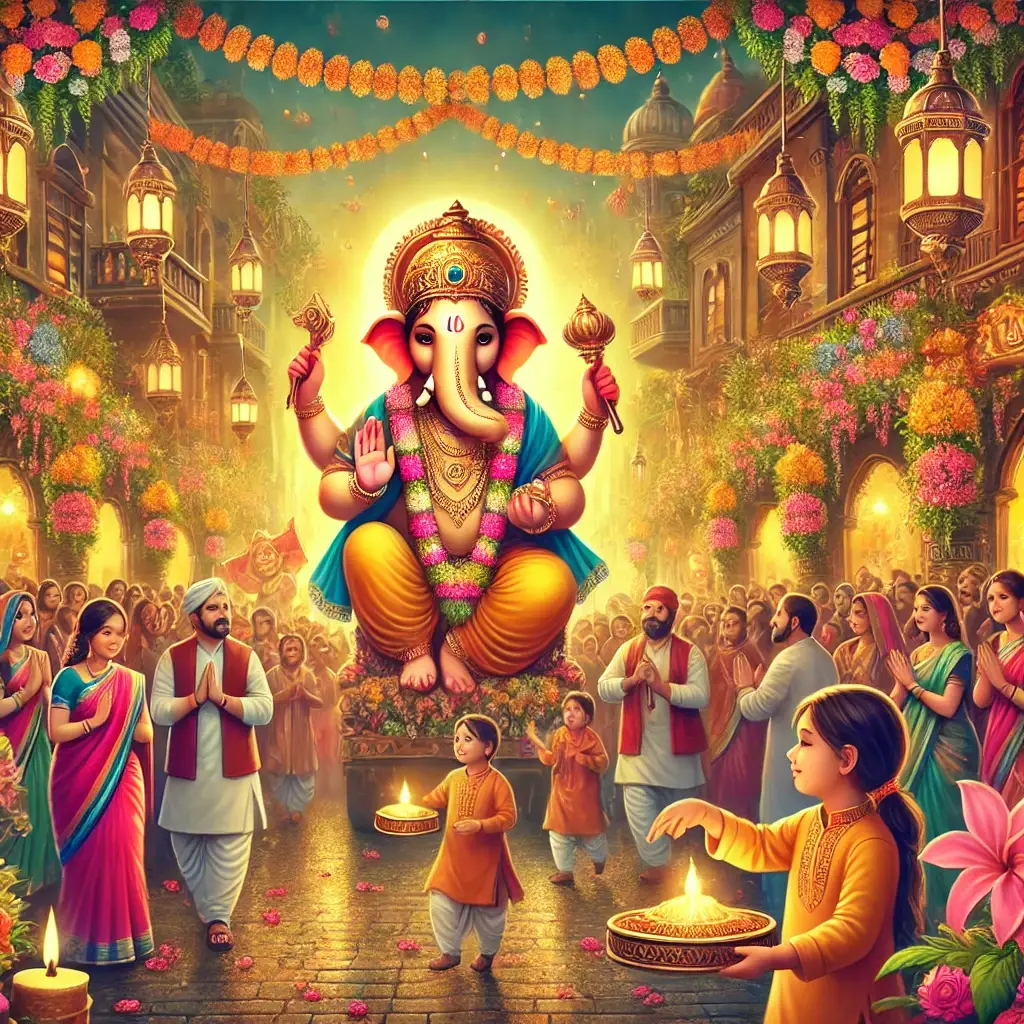
Ganesha’s stories continue through ages — from his love for sweets (modaks), his role as the scribe of the Mahabharata (using his broken tusk), to being the first deity worshipped before any venture.
Every Ganesh Chaturthi, his arrival is celebrated with immense joy, and his immersion symbolizes life’s cyclical nature — from creation to dissolution and rebirth.

